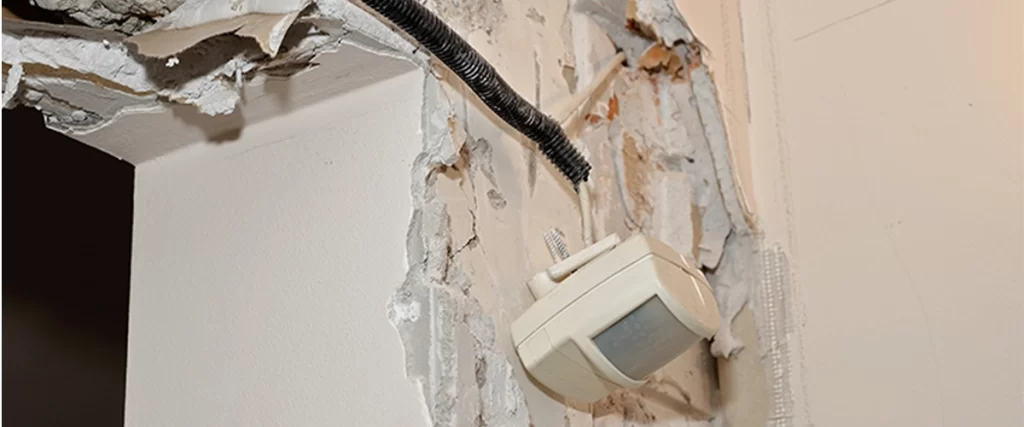When the lights flicker during a storm or your outlets mysteriously stop working, it’s more than just a minor inconvenience—it’s a potential safety hazard. If you’re a homeowner, especially here in Maryland where sudden weather changes and older housing stock are common, electrical issues aren’t something to ignore.
Knowing the basics of electrical repair services and how to troubleshoot them safely can help you stay ahead of bigger (and more expensive) problems.
In this guide, we’ll walk through the 10 most common types of home electrical repairs, give you tips on how to troubleshoot them, and help you understand when it’s time to bring in a licensed professional. Whether your home is a classic Colonial in Glen Burnie or a modern build in Anne Arundel County, this article is packed with practical, local-friendly advice.
Let’s dive in.

1. Flickering Lights
Flickering lights aren’t just annoying—they can signal serious wiring issues.
What Causes It?
- Loose light bulbs
- Faulty light switches
- Voltage fluctuations (especially during storms or heavy HVAC use)
Troubleshooting Tips:
- Try tightening the bulb or replacing it with a new one.
- If it flickers when you toggle the switch, you might have a faulty connection.
- Check if flickering happens in multiple rooms—this could point to a bigger problem in your electrical panel.
If your lights dim when major appliances turn on, call a pro. This could be a sign of a circuit overload or a utility service issue.
2. Tripped Circuit Breakers
Breakers trip for a reason—usually to prevent overheating or a fire.
Common Causes:
- Overloaded circuits
- Short circuits
- Ground faults
What You Can Do:
- Unplug a few devices and try flipping the breaker back on.
- If it keeps tripping the same breaker, don’t keep flipping it. Something’s wrong.
Local Tip: In older homes around Baltimore and Glen Burnie, outdated electrical panels (like Federal Pacific Electric) are notorious for malfunctioning and should be upgraded.
3. Dead Outlets
Plug in a lamp and… nothing? Dead outlets are surprisingly common.
Causes:
- Tripped GFCI (especially in kitchens, bathrooms, and garages)
- Burned-out wiring
- Faulty receptacles
Fix-It Steps:
- Look for nearby GFCI outlets and press the “reset” button.
- Check your breaker box to see if anything tripped.
- If that doesn’t work, the wiring behind the outlet may be damaged.
Reminder: Don’t try to replace an outlet unless you’ve turned off power at the panel and confirmed it with a voltage tester.
4. Light Switch Problems
Got a switch that crackles, gets warm, or doesn’t do anything? That’s a red flag.
Troubleshooting Ideas:
- If it feels loose, it may just need tightening.
- A warm switch may be a sign of an overloaded circuit or faulty wiring.
- No response? The connection may have failed behind the wall.
Replacing a light switch is a DIY-friendly project, but only if you’re confident and follow safety precautions.
5. Faulty Ceiling Fans
Ceiling fans that wobble, buzz, or refuse to spin properly can be frustrating.
Why It Happens:
- Loose mounting brackets
- Worn-out capacitors
- Poor wiring connections
Quick Fix:
- Tighten all screws on the fan and check the blades for balance.
- If it hums but doesn’t spin, the capacitor might need replacement.
Local Insight: Because Maryland summers can get humid, ceiling fans are essential—and often overused. Regular maintenance matters!
6. Overloaded Outlets
Have a million things plugged into one outlet using multiple power strips? That’s risky business.
What Can Go Wrong:
- Melted outlets
- Tripped breakers
- Fire hazards
Safer Habits:
- Spread devices across multiple outlets and circuits.
- Don’t plug high-wattage appliances into power strips.
- Consider installing more dedicated outlets or circuits.
According to the U.S. Consumer Product Safety Commission, overloaded circuits are a leading cause of residential fires.
7. Electrical Panel Upgrades
Still rocking a 100-amp service in a 21st-century home? Time to level up.
Signs You Need an Upgrade:
- Frequent breaker trips
- Can’t run the microwave and toaster at the same time
- Installing new appliances like EV chargers or hot tubs
Local Note: Newer homes in Glen Burnie and surrounding areas are built with 200-amp service in mind. If you’re doing renovations or expanding your home, upgrading your panel should be a priority.
8. Outdoor Electrical Repairs
Your backyard deserves safe, reliable power too—especially for lighting, fountains, or outdoor kitchens.
Common Issues:
- Water-damaged outlets
- Faulty underground wiring
- Non-weatherproof fixtures
Solutions:
- Use only outdoor-rated extension cords and fixtures.
- Replace covers on outlets and ensure they are GFCI protected.
- Call a pro for any underground wiring issues—digging around electricity is no DIY job.
Tip: Maryland weather swings from humid summers to icy winters, which can wear down outdoor electrical components faster than you think.
9. Smoke Detector Malfunctions
A beeping smoke detector at 2 a.m. is frustrating, but it might be a life-saving warning.
Common Causes:
- Low batteries
- Expired detectors (yes, they expire after ~10 years)
- Loose connections
Troubleshooting:
- Change the batteries annually (pick a holiday like Daylight Saving Time as a reminder).
- If it still beeps, try replacing the entire unit.
For hardwired detectors, always turn off power before attempting any replacement.
10. Whole-Home Surge Protection
Lightning strikes and utility surges can fry your appliances in an instant.
How It Works:
- Whole-home surge protectors are installed at the panel to absorb voltage spikes.
- They add a layer of protection beyond your standard power strip.
Maryland ranks in the top half of the country for lightning strikes per year, so this is a smart investment.
Best Electrical Component Manufacturers
When it comes to safety and durability, quality matters. These manufacturers are known for producing reliable electrical components you can trust.
- Leviton – Known for innovative switches, outlets, and smart home products.
- Eaton – Durable breakers and panels used in many new construction homes.
- Square D by Schneider Electric – Trusted brand for circuit breakers and load centers.
- Lutron – Industry leader in dimmers and smart lighting controls.
- Siemens – Popular for residential panels and surge protectors.

FAQ: Home Electrical Repair Questions
What’s the most common electrical issue in Maryland homes?
Tripped breakers and outdated panels, especially in homes built before the 1980s.
Can I do my own electrical repairs?
Small jobs like replacing a light switch or outlet are okay if you’re confident—but anything involving wiring or the panel should be handled by a licensed electrician.
Why does my circuit breaker trip every time I use my microwave?
It’s likely that your microwave shares a circuit with other high-wattage appliances. A dedicated circuit might be needed.
What’s a GFCI and why does it keep tripping?
GFCI (Ground Fault Circuit Interrupter) outlets protect against electrical shock. Moisture or a damaged appliance could be triggering it.
When should I upgrade my electrical panel?
If it’s over 30 years old, if breakers trip frequently, or if you’re adding new appliances, it’s time.
Final Thoughts + Call to Action
Keeping your home’s electrical system in top shape isn’t just about convenience—it’s about safety. Whether you’re dealing with flickering lights, dead outlets, or planning to upgrade your panel, having a basic understanding of the most common electrical repair services can save you money and give you peace of mind.
If you’re unsure or just want a second set of eyes on the problem, don’t hesitate to reach out. Contact us at (610) 214-2179 today to work with the best electrician and let’s talk about how we can make your home safer and more efficient, without the guesswork.
